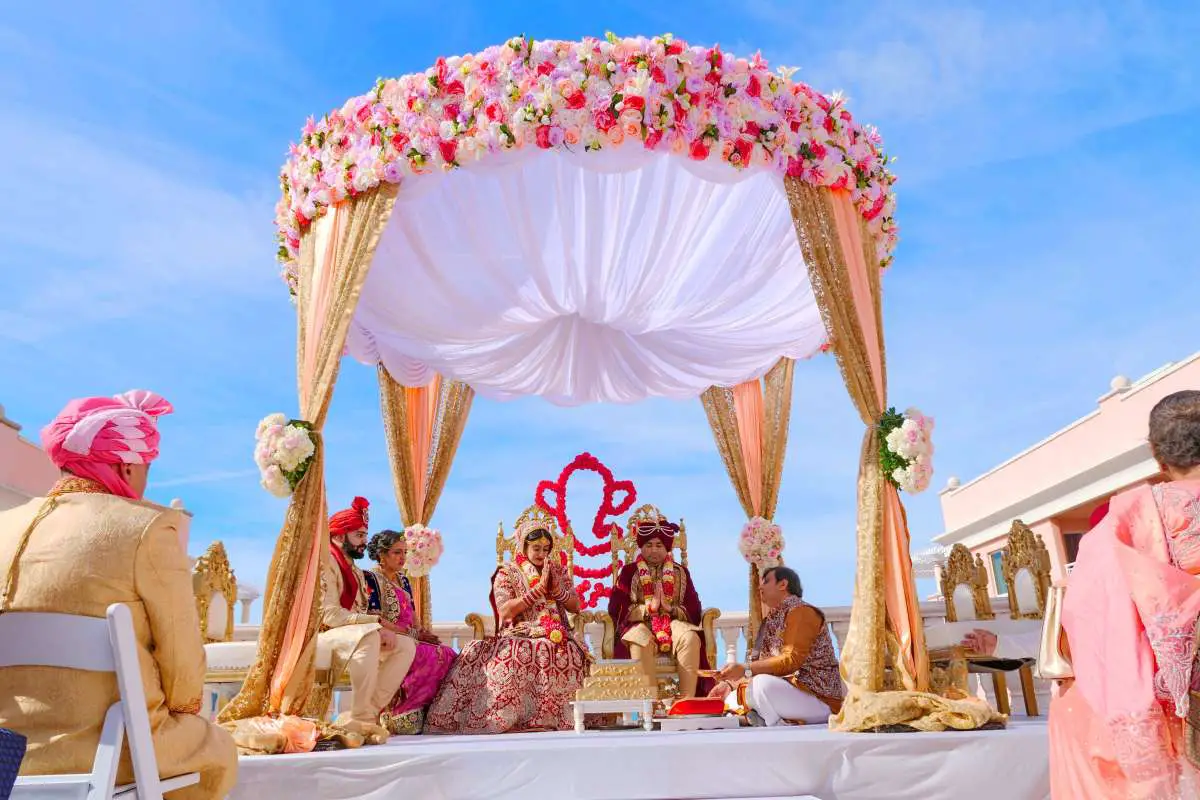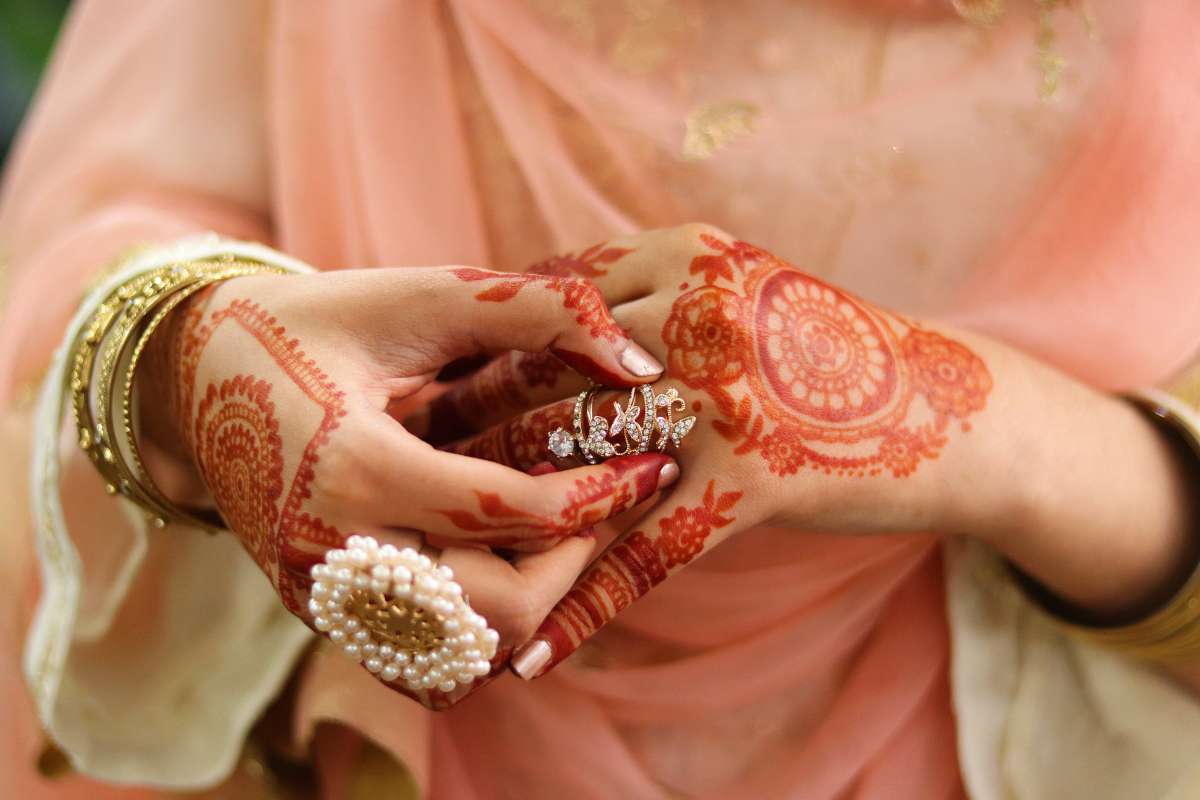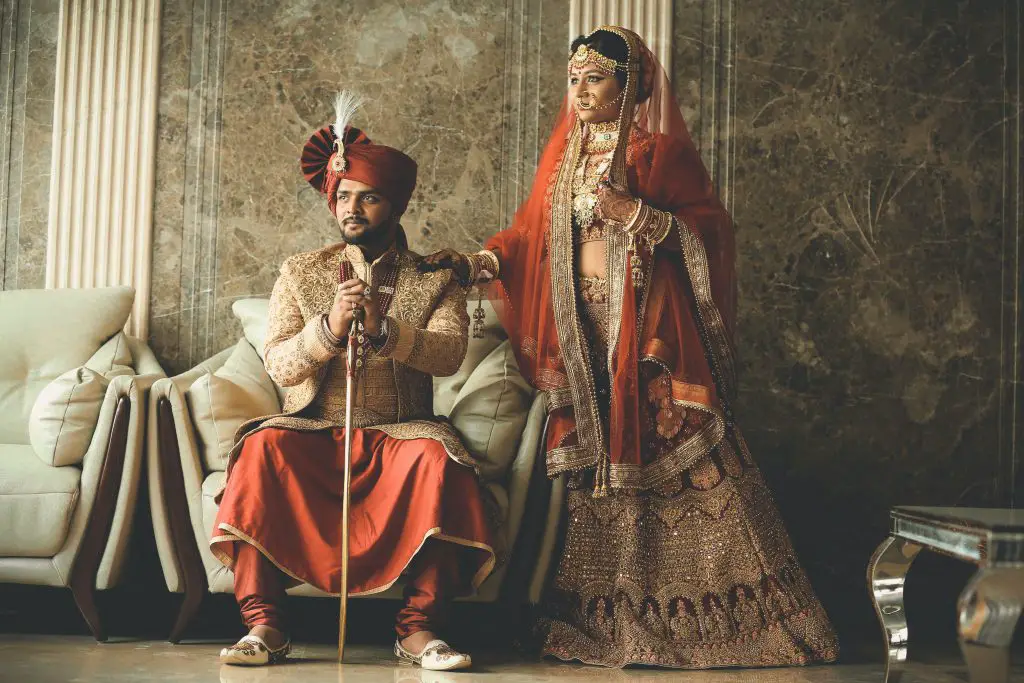In Hindu culture, marriage is not merely a legal union between two individuals; it represents a sacred bond between two souls that extends beyond this lifetime. It is considered a union of the bride and groom and their families.
Hindu weddings, rich in cultural and spiritual symbolism, include various rituals, with the Seven Steps, or "Saath Pheras," among the most significant. These seven vows, taken around a sacred fire, represent the foundation of a married life, binding the couple together for seven lifetimes.
Let’s get straight to the point
In Hindu culture, marriage is considered a sacred bond beyond a legal union, linking two souls and their families for seven lifetimes. The key ritual in Hindu weddings is the "Saath Pheras," or Seven Steps, where the god Agni witnesses the bride and groom take seven vows around a sacred fire.
These vows represent essential aspects of married life, such as nourishment, strength, prosperity, family, progeny, health, and friendship. These vows highlight mutual respect, companionship, and the responsibilities each partner has toward the other.
The sacred fire symbolises the purity and divine witness of the marriage, ensuring the vows are binding for eternity. While there are regional variations in the ceremony, the core significance of these vows remains constant, emphasising a lifelong spiritual and emotional commitment between the couple.
Hindu weddings celebrate love, tradition, and family, with the Saath Pheras forming the foundation for a successful and harmonious marriage.
Marriage In Hinduism: A Spiritual Union

Marriage in Hinduism is viewed as a spiritual connection between two individuals and their families. Hindus believe that marriages are arranged in heaven, and the union between a couple is sacred, intended to last across seven lives. The Seven Steps, or Saath Pheras, taken during a Hindu wedding ceremony, represent the seven commitments the bride and groom make to each other, pledging a lifetime of love, happiness, and mutual respect.
Mangal Pheras: The Sacred Walk
The ceremony of Saath Pheras, also known as Mangal Pheras, involves the bride and groom walking around the sacred fire, symbolising the presence of the Hindu god Agni, who witnesses their vows. These seven vows form the basis of their marriage, emphasising the couple's responsibilities and the importance of companionship and love. The couple’s families come together to support the union, highlighting that marriage in Hinduism extends beyond the individuals to the wider family unit.
Understanding The Seven Vows
The seven vows, each representing a different aspect of married life, are taken while circumambulating the sacred fire. The priest chants them and recites them in Sanskrit. These vows are more than just promises—they encapsulate the values and duties essential to a successful and harmonious marriage.
First Phera: Commitment to Nourishment
In the first vow, the couple prays for nourishment and sustenance. The groom promises to provide for his family, ensuring they have enough food and resources. The bride, in turn, vows to share in household duties and raise their children with love and care.
Second Phera: Commitment to Strength
The second vow focuses on strength—both physical and emotional. The groom promises to protect and support his wife, while the bride promises to stand by him through life’s challenges. Together, they pledge to face any difficulties, working as a team to overcome obstacles.
Third Phera: Commitment to Prosperity
In the third vow, the couple prays for prosperity. The groom promises to work hard and provide for the family's financial well-being. The bride vows to manage household finances wisely and ensure the home remains a place of love and security. The emphasis is on mutual support and shared responsibilities in building a prosperous future.
Fourth Phera: Commitment to Family
The fourth vow highlights the importance of family and respecting elders. The groom expresses gratitude for the love his bride brings into his life and promises to respect and honour her family. The bride, in return, promises to support her husband in his duties towards their family and to stand by him in making important decisions.
Fifth Phera: Commitment to Progeny
In the fifth vow, the couple prays for healthy children and vows to raise them with love, moral values, and education. They commit to providing a nurturing environment for their future offspring, ensuring their well-being and development.
Sixth Phera: Commitment to Health and Longevity
The sixth vow focuses on the couple's health and longevity. They ask for blessings of good health, happiness, and a long life together. The couple pledges to care for each other’s health and well-being, ensuring that they remain strong and healthy throughout their marriage.
Seventh Phera: Commitment to Friendship
In the final vow, the couple promises to remain best friends and companions. They pledge to support and care for one another, valuing their friendship as the foundation of their marriage. This vow symbolises the deep bond of love and respect that will guide them through all aspects of life.
Religious And Cultural Significance Of Saath Pheras
The ritual of Saath Pheras has deep roots in Hindu culture and religion. It is believed that marriage is not considered valid in Hindu tradition without performing these seven circumambulations around the sacred fire. The presence of the god Agni is seen as a divine seal, ensuring that the vows taken are binding for eternity.
Hindu marriages have evolved, but the essence of the rituals, particularly the Saath Pheras, remains unchanged. These vows are meant to unite the couple not only on a physical and emotional level but also on a spiritual plane. The couple is blessed with the presence of their family, priests, and deities as they take these sacred steps toward a future filled with love, respect, and companionship.
The Role Of The Sacred Fire In Hindu Weddings

The sacred fire, or Agni, plays a central role in the Hindu wedding ceremony. It is believed that the god Agni witnesses the vows taken by the couple, ensuring they are sanctified. The fire represents purity and the divine presence, and walking around the fire symbolises the couple's journey through life together, with Agni providing warmth, protection, and guidance.
The priest kindles the sacred fire during the ceremony, and the bride and groom perform their vows in front of this eternal flame. The fire symbolises the challenges and joys they will face together, offering protection and blessings for a prosperous married life.
Variations Of Saath Pheras
While the seven vows are an integral part of Hindu wedding ceremonies, regional and cultural variations exist in how they are performed. Only four or five Pheras may be taken in some regions, while others adhere strictly to the seven steps. Regardless of the variation, the underlying meaning remains the same: the couple is bound together by sacred promises, witnessed by the gods, to support and cherish one another.
The Importance Of Wedding Vows In Hindu Culture
Wedding vows are not unique to Hinduism; they are a universal element of marriage ceremonies across cultures. However, the specific structure of the seven vows in Hindu weddings carries deep spiritual significance. These vows outline the duties and responsibilities of the couple, emphasising equality, respect, and mutual care.
The couple's commitment to one another is not limited to this life but extends across seven lifetimes, reinforcing the belief in the eternal nature of marriage. This concept of lifelong and beyond-life companionship sets Hindu weddings apart, with the Saath Pheras symbolising the unbreakable bond between husband and wife.
Conclusion
Hindu weddings are a vibrant and spiritually rich celebration of love, family, and tradition. The Seven Steps, or Saath Pheras, form the heart of this ceremony, representing the core values and commitments necessary for a successful marriage. Each vow emphasises different aspects of married life, from nourishment and strength to family and friendship, creating a holistic foundation for the couple’s journey together.
The sacred fire, with the god Agni as witness, seals the marriage, ensuring that the promises made are binding for this life and seven lifetimes. Through these vows, the couple commits to supporting one another through joy and sorrow, building a future based on mutual respect, love, and companionship.
In Hindu tradition, marriage is more than just a social contract—it is a divine union that transcends time, culture, and life itself. By understanding and embracing the significance of the Seven Steps, couples can enter into marriage with a deeper appreciation of their vows' spiritual and cultural importance, ensuring a lifetime of happiness and fulfilment.
Frequently Asked Questions
The Saat Phere (Seven circles) around the sacred fire (yagya) of Hindu Wedding Rituals as Explained by Mathematics... Each circle consists of 360°. The only number from 1 to 9 which cannot divide 360 is 7. So the Bride and Groom go round the Fire 7 Times Ensuring that Nothing Can Divide Their Relationship
Hindu wedding rituals: During Saath Phere, the bride and the groom, circumambulate (walk around) the sacred fire seven times as they exchange their marital vows. ... This is because the bride and the groom exchange marital vows and collectively pray for a blissful married life.
According to ancient Hindu scriptures, there's a kind of marriage where the girl selects her own husband. They meet each other of their own accord, consensually agree to live together, and their relationship is consummated in copulation born of passion. Which means, if two people liked each other, they banged. Awwyeah!
The Saptapadi (the seven steps) is the most important Hindu wedding tradition. After tying the Mangalsutra, the newlywed couple takes seven steps around the holy fire. Once completed, the couple legally becomes husband and wife.
A typical Indian wedding timeline stretches about three days. The Hindu wedding ceremony, which takes place on the third day, usually lasts between one-and-a-half to two hours and is then followed by the reception. The whole day clocks around 16 hours.

